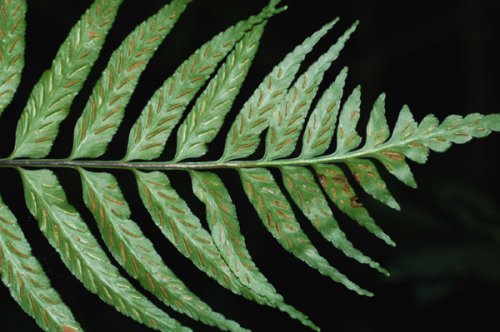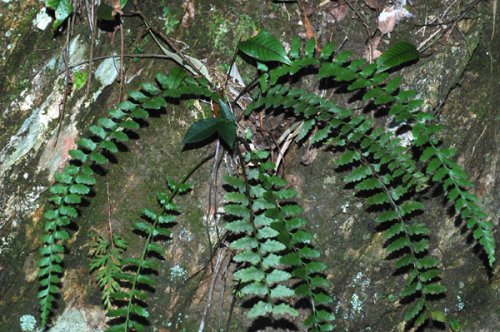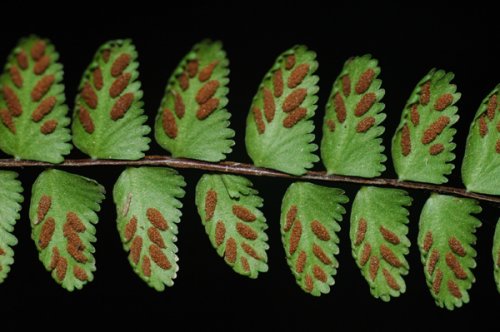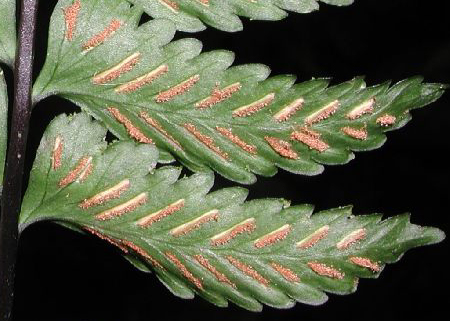Aspleniaceae
Sori on the underside of the deer tongue ( Asplenium scolopendrium )
The Streifenfarngewächse ( Aspleniaceae ) are a family of the Department of ferns ( Polypodiophyta ).
Features
Your name got the Streifenfarngewächse because of arranged in stripes or lines along the longitudinal nerves of the leaves Sori. The spores are always bean-shaped. Some species, however, multiply not only via spores but also vegetatively by leaf buds.
Most Streifenfarngewächse have relatively less-structured, ungefiederte or simply pinnate leaves. The leaf blade is often quite rough even in the tropical representatives. The size of the leaves varies greatly ( from a few centimeters to 2 meters ), but most species are relatively small.
Occurrence
Most Streifenfarngewächse live in the tropics. Compared with other Farngruppen one finds, however, relatively many representatives in the temperate or colder latitudes.
There are mainly perennial epiphytic or live on rocks plants.
System
Of the 700 species occur in Europe, 22 in Germany 12 Thus, this family is in Europe, the most species-rich fern family.
Depending on individual authors, includes the family comprises 1 to 10 genera, although around 95 % of the species to the genus strip ferns ( Asplenium ) include:
- Strip ferns ( Asplenium L.)
The genus Hymenasplenium Hayata has a different number of chromosomes and other root characteristics, which is why they regarded as the sister group of all other (see below ) and the generic character is not questioned.
Smith et al. (2006) assume that the following genera would have to be integrated in Asplenium:
- Antigramma C. Presl
- Camptosorus link
- Ceterach Willd.
- Diellia Brackenr.
- Holodictyum Maxon
- Loxoscaphe T. Moore
- Phyllitis Hill
- Pleurosorus Fée
- Schaffneria Fée ex T. Moore
- Sinephropteris Mickel
- Thamnopteris C. Presl






.jpg/250px-Asplenium_marinum_(aka).jpg)



